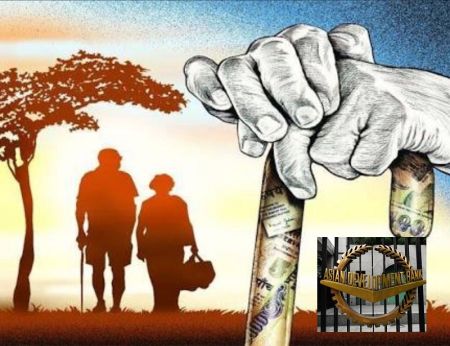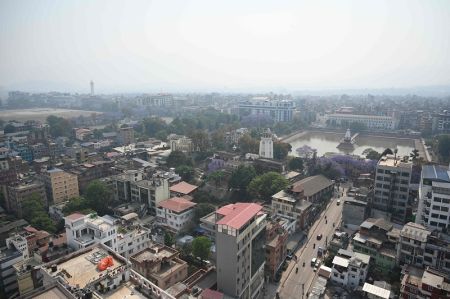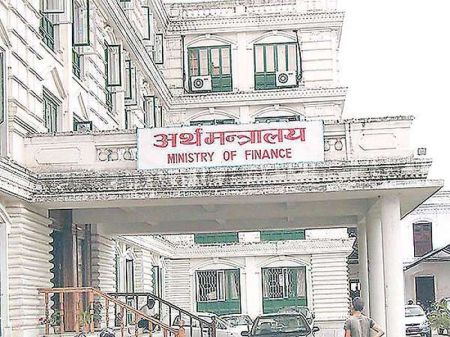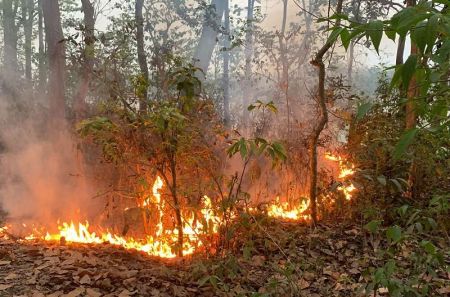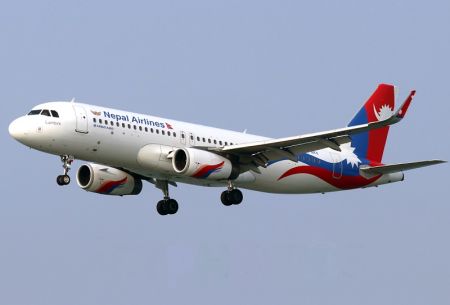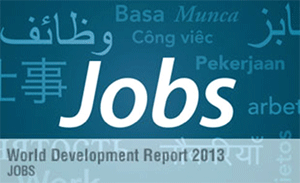
The World Bank stressed that government should make policies for the private sector to take the leading role in job creation. “The government should also help to identify the sectors with less job creation and remove the barriers,” WDR 2013 lead author Jesko S. Hentschel during the programme to publish the report in Nepal, said.
In developing countries, jobs are cornerstones of development, with a pay off far beyond income alone. They are critical for reducing poverty, making cities work, and providing youth with alternatives to violence, says a World Bank report released in Kathmandu on recently.
The World Development Report 2013: Jobs stresses the role of strong private sector led growth in creating jobs and outlines how jobs that do the most for development can spur a virtuous cycle. According to the report 90 per cent of the total jobs throughout the world are created by the private sector.
The report finds that poverty falls as people work their way out of hardship and as jobs empower women to invest more in their children. Efficiency increases as workers get better at what they do, as more productive jobs appear, and as less productive ones disappear. “Societies flourish as jobs foster diversity and provide alternatives to conflict,” states the report.
The report highlights how jobs with the greatest development payoffs are those that raise incomes, make cities function better, connect the economy to global markets, protect the environment, and give people a stake in their societies. According to the World Bank, the global economic crisis and other recent events have raised employment issues to the center of the development dialogue. The WDR authors, who processed over 800 surveys and censuses to arrive at their findings, estimate that worldwide, more than 3 billion people are working, but nearly half work in farming, small household enterprises, or in casual or seasonal day labor, where safety nets are modest or sometimes non-existent and earnings are often meager. The World Bank also highlights to the fact that policy priorities are different in agrarian societies and in urbanizing countries.
“The impact of job creation may differ from one country to another,” Hentschel said.
Nepal Makes No Progress in HDI: UNDP Report
The Human Development Index (HDI) 2013 report shows that Nepal’s position remained unchanged from 157th rank in 2012. Nepal’s HDI was 0.458 in 2012 and this year it increased slightly to 0.463. The index is lower than that of the average of countries with minimum human development. Similarly, Nepal’s index is significantly lower than the average of the South Asian countries: 0.558.
Nepal made little progress in indices except in average life expectancy and per capita income, according to the report published by UNDP. The report says that the per capita income of Nepal decreased by 23 USD to 1137 USD. In 2011, per capita income of Nepal was 1160 USD.HDI is measured based on education, health and life expectancy at birth and one is the highest index.
The report says that the countries in the global south are rising as the new powerhouses. Similarly the South Asia has made a significant progress within a decade. This region’s HDI is growing at the rate of 1.43 per cent, higher than any other regions.
According to the report, 14 countries recorded impressive HDI gains of more than 2 per cent annually since 2000—in order of improvement, they are: Afghanistan, Sierra Leone, Ethiopia, Rwanda, Angola, Timor-Leste, Myanmar, Tanzania, Liberia, Burundi, Mali, Mozambique, Democratic Republic of the Congo, and Niger. Most are low-HDI African countries, with many emerging from long periods of armed conflict. Yet all have made significant recent progress in school attendance, life expectancy and per capita income growth, the data shows.
Meanwhile, neighbouring India and China are in the 136th and the 101st position respectively. India went down from the 134th position and China remains unchanged since 2011. Similarly, Sri Lanka ranked at 92nd position becoming the highest ranked SAARC member country. The other SAARC nations (Bhutan, Bangladesh, Pakistan and Afghanistan) were placed at 140th, 146th, 147th and 175th positions respectively.
Norway, Australia and the United States lead the rankings of 187 countries and territories in the latest HDI, while conflict-torn Democratic Republic of the Congo and drought-stricken Niger have the lowest scores in the HDI’s measurement of national achievement in health, education and income, published in the report.
World Bank Interested to Invest in 10 Cities
The World Bank (WB) has shown interest to invest in 10 cities planned to be developed along the Mid-hill Highway. A technical team of World Bank is arriving in April for a detailed study required for investment, according to Kishor Thapa, Secretary at Ministry of Urban Development. “The team will study and present a report to the board at the World Bank,” he said and added, “Top officials of the World Bank are positive about the opportunity”. However an official agreement is yet to be signed.
The WB will be investing for construction of large infrastructures required for development the cities. “However, Nepali government will spend on development of basic infrastructures” said Thapa. “A master plan is under preparation for all the cities.” The government has begun the process of acquiring land in proposed cities. The ministry has informed that the process of acquiring land for offices and for public use is undergoing. The process of land acquisition for basic infrastructure such as playground, public parks, hospitals, schools, government offices, water processing centre among others, has already begun.
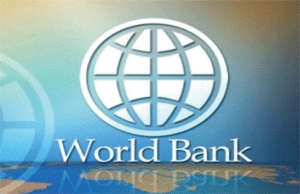
The government is preparing to establish offices in proposed cities within this fiscal year. As the land acquiring process ends, the donor organisations will be called for investment, according to Thapa. From the coming fiscal year, the government will begin the process of building basic infrastructures. For the construction of basic infrastructure, an estimated annual expenditure of Rs 300 million is required for each city.
The government has already selected ten places along the mid-hill highway to develop modern cities. Some of the selected places are Fidim (Panchthar), Basantapur (Terathum), Khurkot (Sindhuli), Galchhi (Dhading), Dumre Bazar (Tanahu) and Burtiwang (Baglung). Similarly Chaurjahari (Rukum), Rakam Karnali (Dailekh), Safebagar (Accham) and Patan (Baitadi) are also selected places. The ministry said the new cities are being developed to tame the high migration to existing cities. All the selected places will be urbanised through Unified Land Development Programme (land pooling).
Nepali Tea Gets 3 New Destinations
Himalayan Orthodox Tea Producer’s Association of Nepal is planning to export organic tea to three new countries- China, USA, and Russia - within a month. “Export to these countries is the result of high demand of Nepali Tea there,” said Kamal Raj Mainali, Treasurer at the Association. He further informed that the tea is currently being exported to these places as a test. “We are planning to commercially export within a month,” he said. Nepali organic tea is currently exported to Germany, France, Czech Republic, Japan and some other countries.
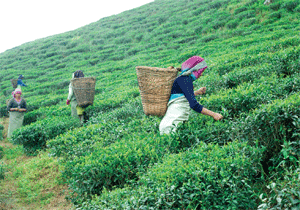
Under the testing phase, four tea industries are exporting around seven quintals of tea monthly. Kanchanjangha Tea Estate, Himalayan Shangri-la Tea Producers, Gorkha Tea Estate and Guranse Tea Estate are exporting organic tea commercially. Mainali also shared that business representatives of respective countries are planning to visit Nepal for observation of Nepali tea industry. According to Mainali, all tea industries established for organic tea production still do not possess organic certificate. Countries like the USA, Japan and Australia among others have been providing certification. The association said that 16 industries are currently in the line of producing organic tea while only four industries have received organic certification. According to Mainali, in order to acquire organic certification, one industry must add about Rs 1.5 to 2 million investment. This year, Himalayan Shangri-la Tea Producers acquired ‘organic certification’, said Mainali, who is also the Director of the company. Previously, Kanchanjangha Tea Estate, Gorkha Tea State and Guranse Tea Estate had acquired organic certification.
‘A’ grade tea produced in Nepal is exported to third countries. The Association has informed that 300,000 kg of organic certified tea is produced annually in Nepal. “The demand for such tea in abroad is still high,” Mainali said. He further added, “Nepali companies are not being able to produce tea to meet the demand.” Tea industrialists say highly advanced technologies and skills are required for organic tea production in Nepal.






